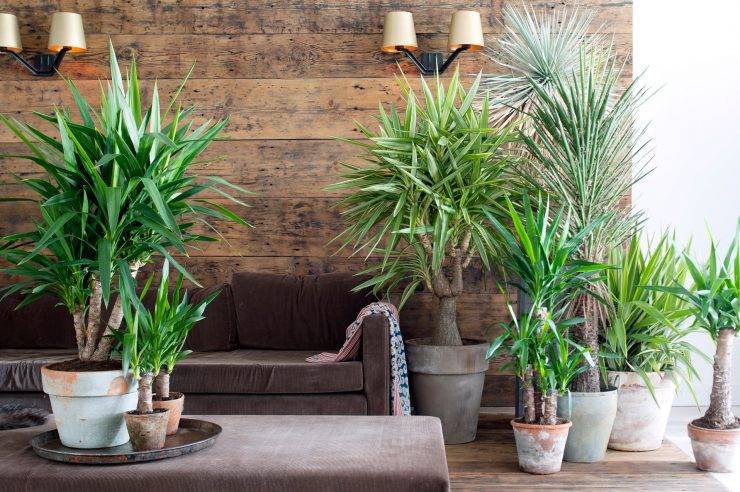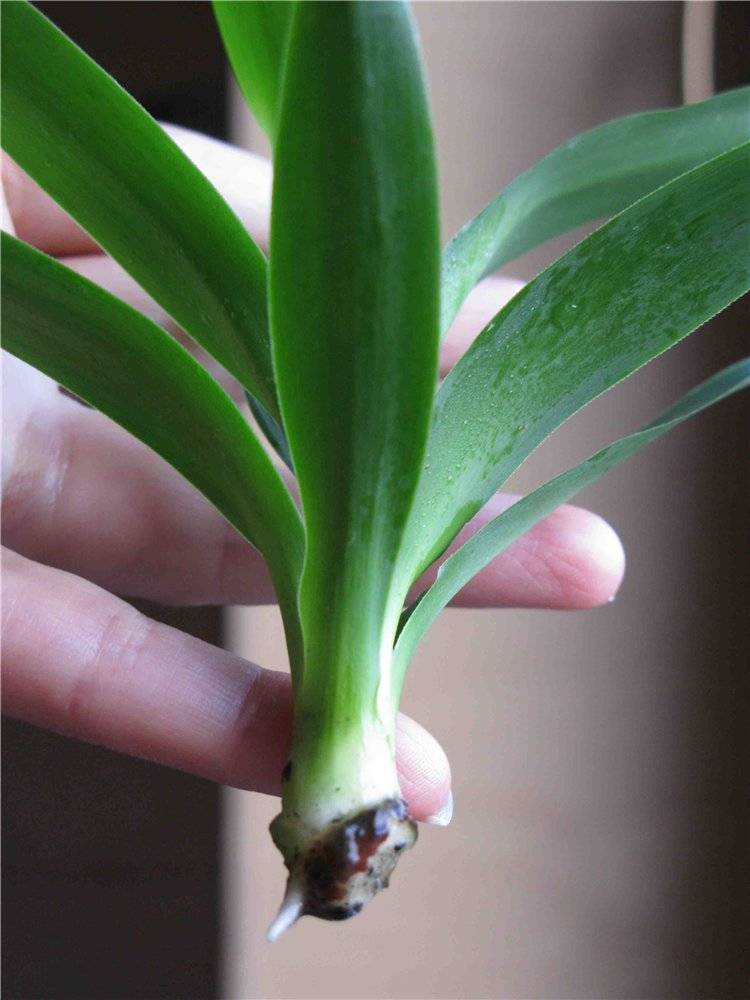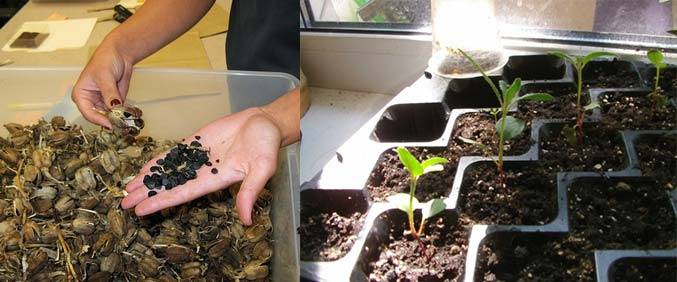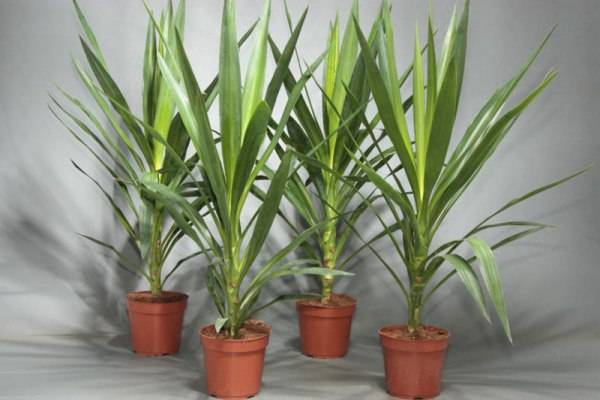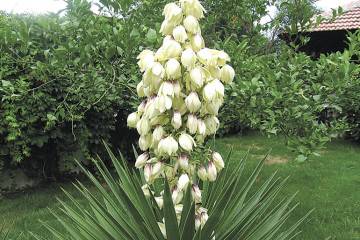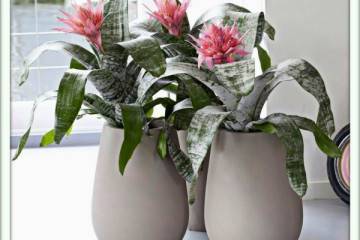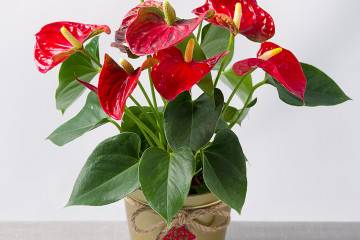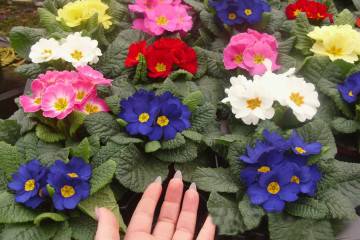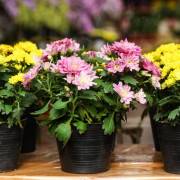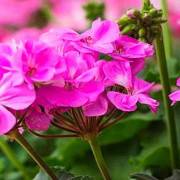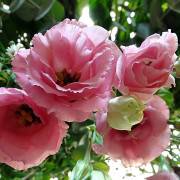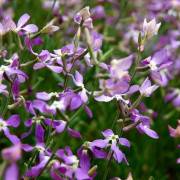Yucca flower - reproduction at home
Content:
Not all exotic houseplants can reproduce as easily as yucca does. It is enough for her to organize greenhouse conditions, show patience and care. Yucca is perfectly divided by the trunk, cuttings and even air layers. This beauty is truly a miracle for a florist.
Popular breeding methods
The easiest way to propagate a domestic palm tree is to cut its apical shoots. Side cuts are very easy to graft.
How to root a yucca if there is nothing to cut? It is possible to artificially induce the growth of lateral shoots, which can be further propagated by cuttings. And a dying flower can be saved by the method of air layers. This method is not easy, but it will keep the palm tree almost in its original form.
Propagation of yucca by cuttings
For good planting material, it is better if a hardened stem is formed at the cutting. Then the risk of decay of the cut site during the growth of roots in water or soil is reduced.
To root the cuttings, you need nutritious moist soil. If the sprig is small, cover the pot with a jar. Large cuttings can be placed in a transparent bag.
The soil dries out slowly under the jar and in the bag, so you rarely need to moisten the pot. The greenhouse is placed in a sunny place, but without direct rays. The first roots will appear after a month and a half.
Propagation by apical cuttings
The top of the yucca is cut off when it begins to stretch and lose its decorative effect. It is important to trim with a fine-toothed tool. You should get an even cut, without bevels in one direction. The cut on the mother plant is treated with charcoal and sealed to prevent the trunk from drying out.
The cut part should rest for 40-60 minutes, and then it can be immersed in water or soil to start the roots. The cut off top of the yucca reproduces at home, like cuttings.
Seed propagation
Yucca seeds are not uncommon for flower shops in major cities. They can also be ordered by mail. Usually there are 3-5 seed pods in a bag. And already in them are black, glossy seeds.
It should be sown immediately into the nutrient soil to a depth of no more than 5 mm. The seed container is covered with glass or a bag. Ventilate daily and remove condensation. The optimum temperature for seedlings is 25 ° C.
Young shoots are planted after the appearance of two full leaves. The sizes of the pots are selected small, they should be measured according to the root system.
Propagation by air layers
This method is used when the yucca is neglected, for example, the roots of the plant have begun to rot or the trunk of the palm tree has become soft. Putrefactive processes are going on inside, it can be dangerous to cut off hard areas. The plant is very weakened and not always able to put out roots.
How to propagate a yucca with rotting roots step by step:
- Restore the conditions of keeping the plant, bringing them as close as possible to the proper ones.
- Feel for soft and not yet affected areas of the trunk.
- Just above where the trunk is still solid, you need to remove the bark around the entire circumference. The thickness of the cut is 0.5 cm.
- Wrap the cut with wet sphagnum moss and secure.
- Cover the place with foil, but with possible access to moisten the moss.
- Spray the moss regularly with a spray bottle, avoiding water runs down the trunk.
After 20-30 days, the first root processes are formed on the site. To transplant a palm tree, it is necessary that the roots grow up to 5-6 cm. The new plant is separated just below the grown roots and planted in a nutritious soil. The cut must be processed with crushed coal.
Plant propagation by part of the root
How to plant a yucca that has sprouted at the very base of the trunk? It can be propagated by dividing the root. The plant is removed from the pot and the trunks are cut with a file. It is important when separating to distribute the roots equally for both trunks.
The cut points are treated with crushed coal and allowed to dry for 2 hours, after which the separated parts are ready for planting in new soil.
How to properly grow a yucca from a scion:
- Wait until the new plant grows up and gets stronger.
- Include additional fertilizer to maintain growth and nutrition.
- Carefully remove the process by cutting it off from the root with a sharp knife.
- Process both cuts.
Breeding with this method is not troublesome. The shoots give strong babies that quickly take root in a new pot.
Rooting process and planting
On average, it takes 20-30 days for the roots to appear. It takes up to 60 days for full rooting.
Plant the seedling immediately in a spacious pot. Good drainage must be organized: at the bottom of the pot there are large holes for the drain of excess water and a layer of expanded clay at least 5 cm.
You can take the soil special for dracaena, yucca, nolina or mix it yourself. It is necessary to take in equal parts sod, leafy soil and sand.
Follow-up care of seedlings
To speed up the rooting of seedlings, you can place them in a mini greenhouse. There, the necessary moist environment is formed for the active growth of the flower. Humidify with care, as condensation forms at high temperatures. It also acts as irrigation, settling on the soil.
The optimum temperature is not lower than 25 ° C. Rooting is best done in early summer when temperatures are stable.
Only when the new palm tree begins to grow actively can you begin to apply nitrogen-based fertilizers for healthy and beautiful greenery. Twice a month will be enough.
Diseases and pests during the reproduction of yucca
The yucca root system does not like waterlogging. Watering issues must be kept under control and carefully observed so that young roots do not rot. Rot from the roots quickly goes down the trunk, making it soft.
The young plant transfers pests from the mother. It is important to treat the leaf plates with a solution of laundry soap, and then treat them with an insecticide.
For yucca palm lovers, reproduction at home is not difficult. It takes root well, although the roots grow slowly. You can create a whole composition and decorate your home by planting several yucca trunks of different heights in one pot.
